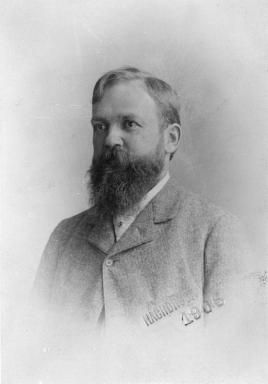Wilhelm Meyer-Lübke facts for kids
Wilhelm Meyer-Lübke (born January 30, 1861 – died October 4, 1936) was an important Swiss expert in languages. He was a philologist, which means he studied languages and how they developed over time. He was part of a group of language experts called the Neogrammarian school. They believed that language changes followed strict rules.
Quick facts for kids
Wilhelm Meyer-Lübke
|
|
|---|---|

Wilhelm Meyer-Lübke en 1906.
|
|
| Born | 30 January 1861 Dübendorf |
| Died | 4 October 1936 Bonn |
| Employer | |
| Awards | |
Contents
Early Life and Education
Wilhelm Meyer-Lübke was born in Dübendorf, Switzerland. He was the nephew of a famous writer, Conrad Ferdinand Meyer. From a young age, he was interested in languages.
He studied Indo-European philology at the University of Zurich. This field looks at the history of languages like English, German, and Latin. He also studied at the University of Berlin.
Meyer-Lübke earned his PhD in Romance philology in 1883. Romance philology is the study of languages that came from Latin, like Spanish, French, Italian, and Portuguese. His PhD paper was about how the Latin "neuter" gender changed in Romance languages. After this, he spent some time in Italy and also attended lectures in Paris.
Academic Career and Contributions
In 1887, Meyer-Lübke became a professor at the University of Jena. He taught comparative linguistics, which means comparing different languages to see how they are related.
Later, in 1890, he moved to the University of Vienna. There, he became a full professor of Romance philology in 1892. He was also the dean and rector (head) of the university for a year.
In 1915, he moved again to the University of Bonn. He took over a professorship that was once held by another famous language expert, Friedrich Diez. Wilhelm Meyer-Lübke was known as one of the most important Romance linguists of his time. He also traveled a lot, giving lectures and teaching as a visiting professor in other countries.
Important Books and Works
Wilhelm Meyer-Lübke wrote several important books that are still used by language students today.
- Grammar of the Romance Languages: This big work was published in four parts between 1890 and 1902. It explains the grammar rules of Romance languages in great detail.
- Introduction to the Study of Romance Linguistics: Published in 1901, this book helped new students understand how to study Romance languages.
- Etymological Dictionary of Romance: This dictionary came out in 1911. It explains where words in Romance languages come from, tracing them back to their original Latin roots.
See also
 In Spanish: Wilhelm Meyer-Lübke para niños
In Spanish: Wilhelm Meyer-Lübke para niños

